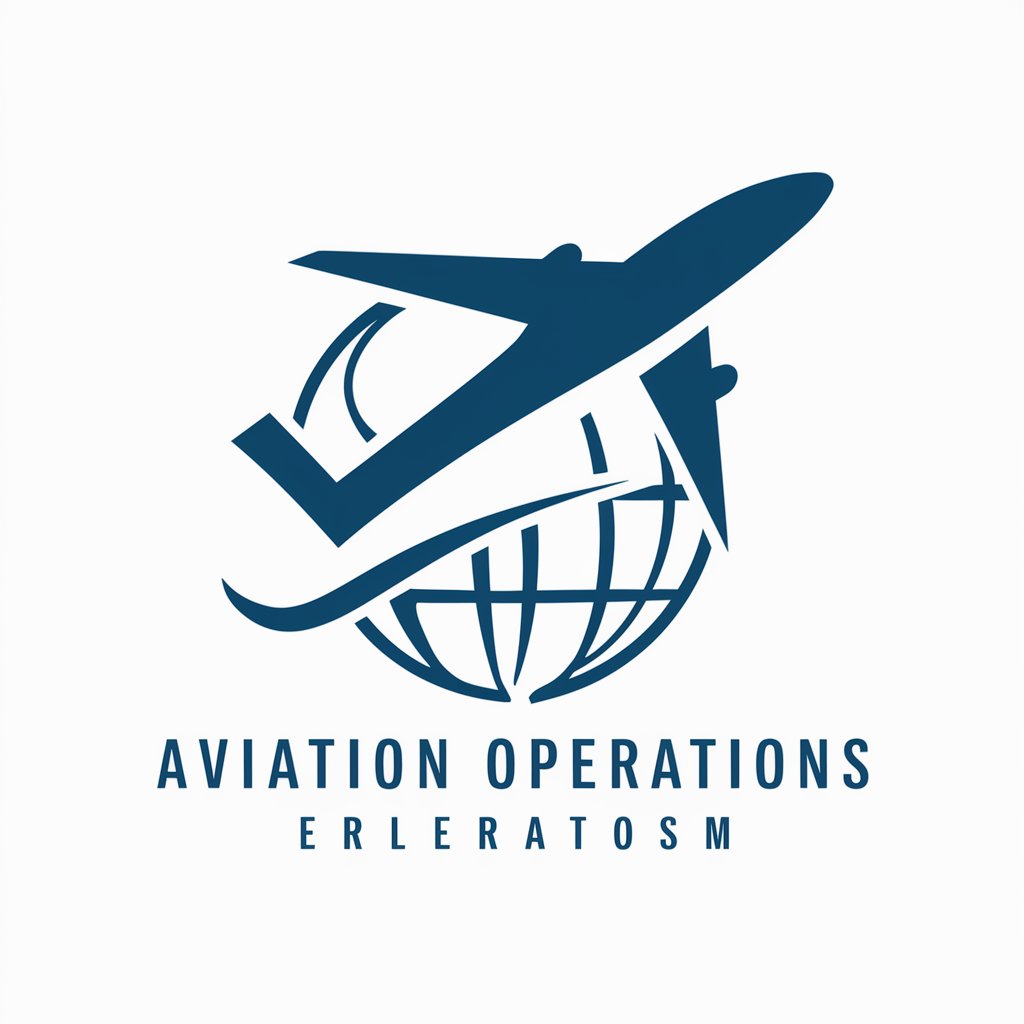Aviation Operations - Aviation Operations Info

Welcome to Aviation Operations, your trusted aviation partner.
Streamline Aviation with AI
Create a detailed summary of sustainable aviation fuel (SAF) policies.
Explain the life cycle emissions methodology for CORSIA eligible fuels.
Provide an overview of the ICAO's SAF logistics framework.
Describe the sustainability certification process for SAF under CORSIA.
Get Embed Code
Introduction to Aviation Operations
Aviation Operations is designed to serve as a comprehensive resource for various aviation industry stakeholders by providing accurate and verified information about aviation-related topics. It focuses on offering a centralized source of knowledge, ensuring that aviation professionals, regulators, and enthusiasts can access a reliable database of information pertinent to aviation operations, regulations, sustainability practices, and technological advancements. For instance, in the context of regulatory compliance, Aviation Operations can deliver detailed insights into the International Civil Aviation Organization (ICAO)'s standards and recommended practices, assisting airlines and airports in maintaining global compliance standards. Powered by ChatGPT-4o。

Main Functions of Aviation Operations
Regulatory Guidance
Example
Providing up-to-date information on CORSIA's sustainability certification requirements, helping airlines navigate the complexities of compliance.
Scenario
An airline needs to understand the latest CORSIA standards to ensure their fuel procurement strategies align with international sustainability benchmarks.
Technological Updates
Example
Offering insights into advancements in Sustainable Aviation Fuels (SAF) production technologies, which are crucial for reducing aviation carbon footprints.
Scenario
An aerospace manufacturer seeks detailed information on emerging technologies for SAF to explore potential investment and development opportunities.
Operational Safety Standards
Example
Outlining safety protocols and guidelines from the ICAO, ensuring that aviation operators can maintain high safety standards.
Scenario
An airport operator needs to update their safety procedures in response to new ICAO safety guidelines issued after a recent global aviation safety review.
Ideal Users of Aviation Operations Services
Airlines and Airport Operators
These entities benefit significantly from Aviation Operations as they require access to regulatory, safety, and operational efficiency information to manage day-to-day activities and long-term planning effectively.
Aviation Regulators
Regulatory bodies use Aviation Operations to stay informed about international standards and practices, helping them formulate and enforce local aviation regulations that align with global norms.
Aviation Industry Professionals
Pilots, engineers, and aviation managers rely on Aviation Operations for ongoing professional education and to stay current with the latest industry trends and technological advancements.

Steps for Using Aviation Operations
Begin Your Free Trial
Visit yeschat.ai for a free trial without requiring a login or a ChatGPT Plus subscription.
Identify Your Needs
Determine which aspect of aviation operations you need assistance with, such as safety protocols, flight operations, or maintenance standards.
Use Specific Queries
Use specific questions or keywords related to your aviation needs to retrieve the most relevant and accurate information.
Review Responses
Carefully review the provided information and utilize it to inform decision-making or enhance understanding of aviation operations.
Continuous Learning
Regularly interact with the tool to stay updated on the latest aviation standards, practices, and technologies.
Try other advanced and practical GPTs
WiFi Geek
Empowering WiFi with AI

IdaCode Potato
Clarify Code with AI-Powered Insights

Image Ida
AI-powered image analysis and translation.

Shane Hummus GPT
Empowering Your Digital Voice

Avvocato Commerciale Italiano
Empowering legal decisions with AI

Traduttore italiano spagnolo
AI-powered Italian-Spanish translations.

EL REINO DE LA SEDUCCION 🔥
Empower your creativity with AI.

RHINO
Empower Your Writing with AI

Creador de Presentaciones
Power Your Education with AI

EasyLanguage Assistant
Script, Test, and Deploy Trading Strategies

Language Bridge
Bridging Languages with AI Precision

Parafraseo Humano
Crafting Human-Like Text with AI

Q&A about Aviation Operations
What types of aviation safety information can Aviation Operations provide?
Aviation Operations can provide detailed safety protocols, accident analysis, risk management practices, and compliance standards with international safety regulations.
How can I use Aviation Operations to improve flight operations?
You can access information on efficient flight planning, crew management, fuel management, and strategies for optimizing route selection and air traffic control communications.
What maintenance information does Aviation Operations offer?
The tool provides insights into best practices for aircraft maintenance, hangar management, troubleshooting technical faults, and adhering to maintenance schedules prescribed by manufacturers.
Can Aviation Operations assist with aviation training programs?
Yes, it offers guidance on establishing effective training programs, including pilot training, cabin crew training, and ground personnel training, aligned with current aviation standards.
How does Aviation Operations help with regulatory compliance?
It provides updates and explanations on international and regional aviation regulations, helping organizations ensure compliance with bodies like the FAA, ICAO, and EASA.
